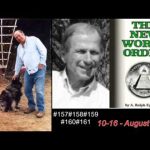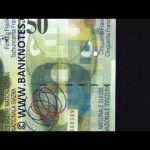JFK 50th: CIA killed President Kennedy with former US Navy Major & DA Jim Garrison
This is a short extract from the much more comprehensive 2 hour long Guns and Butter radio show
first hour
second hour
Jim Garrison’s classic account of his investigation and prosecution of the murder of JFK.
paperback
audiobook
Almost fifty years after the assassination of President John F. Kennedy, his murder continues to haunt the American psyche and stands as a turning point in our nation’s history. The Warren Commission rushed out its report in 1964, but questions continue to linger: Was there a conspiracy? Was there a coup at the highest levels of government?
On March 1, 1967, New Orleans district attorney Jim Garrison shocked the world by arresting local businessman Clay Shaw for conspiracy to murder the president. His alleged co-conspirator, David Ferrie, had been found dead a few days before. Garrison charged that elements of the United States government, in particular the CIA, were behind the crime. From the beginning, his probe was virulently attacked in the media and violently denounced from Washington. His office was infiltrated and sabotaged, and witnesses disappeared and died strangely. Eventually, Shaw was acquitted after the briefest of jury deliberation and the only prosecution ever brought for the murder of President Kennedy was over.
The primary source material for Oliver Stone’s hit film JFK—is Garrison’s own account of his investigations into the background of Lee Harvey Oswald and the assassination of President Kennedy, and his prosecution of Clay Shaw in the trial that followed.
On the Trail of the Assassins is an excellent starting point for those trying to make sense of the 1963 assassination of John F. Kennedy, 35th President of the United States. The author was the District Attorney of New Orleans, Louisiana at the time of the shooting. He felt, rightly it seems, that his jurisdiction contained a hotbed of intrigue against J.F.K. OTA is 2 tales in one: The first marshals the virtual kaleidoscope of sinister information, actual events, recreated events, innuendo, questions, malfeasance, lying, ineptitude, charges and countercharges behind the killing. The second relates the author’s frustrating attempts to convict a real life person with plotting the act. The first effort is highly successful. This is true at least to the extent that the attentive reader should be convinced that 1) Lee Harvey Oswald certainly DID NOT assassinate Kennedy on his own and 2) was in every likelihood not DIRECTLY involved with the shooting -period. Furthermore, the author proved, to this reviewer’s satisfaction that 3) Oswald also did not shoot Dallas Police Officer J.D.Tipitt that fateful afternoon. Linking Tippit to Oswald is critical in determining guilt. Finally, the author effectively eliminates the Mafia as the culprits in the crime. The foregoing is no small accomplishment. Left unanswered are the mysteries that have plagued virtually anyone who is unsatisfied with the Warren Commission or subsequent House investigation into the affair. A partial list of these issues encompass: the virtual criminal activities surrounding Kennedy’s so called autopsy, the presence of a second and even third (!) gunman in Dallas that day, the outright theft of the President’s brain from the National Archives and the total and complete failure of the Secret Service to protect J.F.K. in Dallas. The author properly raises the right questions. Like most investigators, he is unable to provide answers. The most tantalizing questions of all concern Oswald: Who was he? If he did not shoot the President, why is he so prominent And what on the fringes of the event? He certainly was on the scene that day. Was he set up to take the fall? Was he a patsy? His own murder two days after that of the President proved that someone wanted him silenced. The second tale surrounds the trial of one Clay Shaw, a local prominent business leader. Shaw was not charged with the murder but in forming a plot to carry out the assassination. No reader should be surprised at his acquittal. Garrison’s case was unspecific and not coherently put together for such a serious charge. The jury s decision does not detract from the book one iota. There are so many unanswered questions and unexplained events to the Kennedy assassination it boggles the mind. The overriding burden lies in assigning specificity . At least Garrison tried to bring someone to justice. Conspiracy theorists will have to read further to get more answers to the frustrating questions.
Leave A Reply
You must be logged in to post a comment.









 Paranormal
Paranormal

